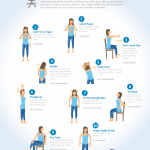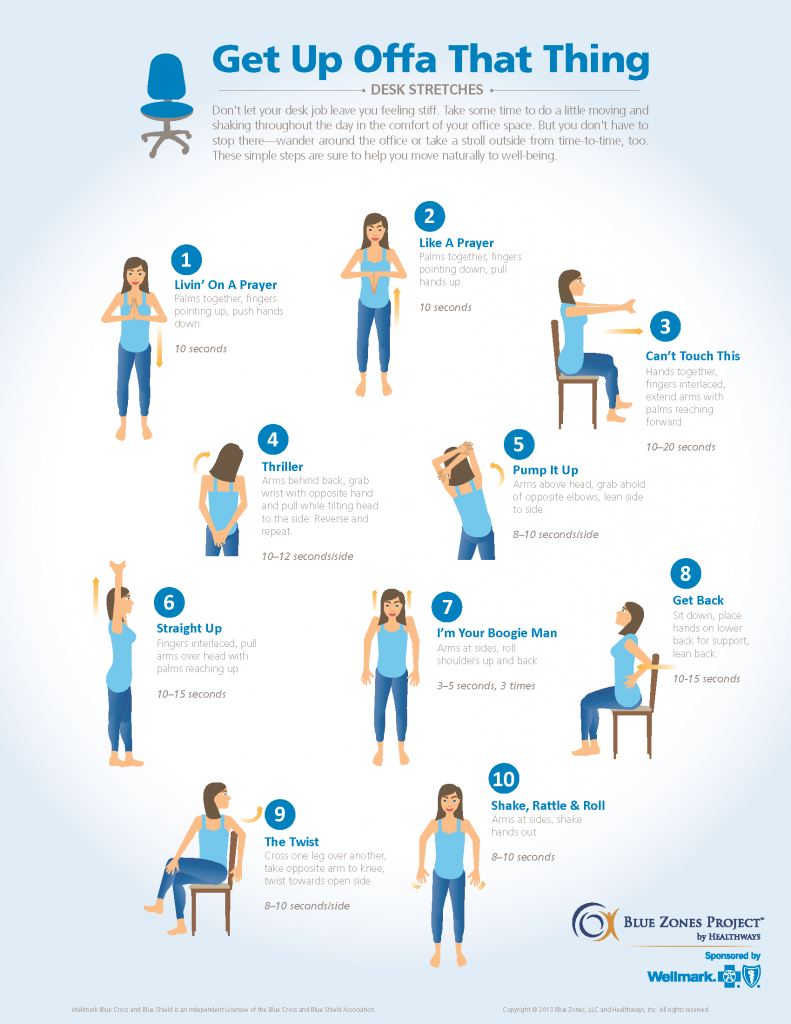Thoughts for Employers
As an employer, we will want to consider our employees may have become deconditioned over these past three months. According to a WebMD article regarding a Danish study on healthy aging, it takes just two weeks of physical inactivity for those who are physically fit to lose a significant amount of their muscle strength.
In that relatively short period of time, young people lose about 30 percent of their muscle strength, leaving them as strong as someone decades older. Meanwhile, active older people who become sedentary for a couple weeks lose about 25 percent of their strength. Even though older people lose less muscle mass and their level of fitness is reduced slightly less than young people, the loss of muscle mass is presumably more critical for older people, because it is likely to have a greater impact on their general health and quality of life. It was noted in this study, it takes about three times the amount of time you were inactive, to get your muscle mass back.
The sales of bicycles and exercise equipment was at an all-time high during this pandemic. I saw people in my neighborhood out for walks, riding their bikes, etc. However, it was a small percentage of my neighborhood, so I am assuming many of us may have gained a few pounds and lost a little muscle tone if they didn’t make up for the lack of outside work activities, with a personal exercise program.
For example, until very recently most of our case management staff who were used to being out on the road meeting with employers, Recovering Workers, and their physicians, were working from their home offices for the entire workday. This led to a significant decrease in the case manager’s daily activity related to their jobs. Add to this how our after-work life has significantly constricted due to the pandemic. In most states any activity other than trips to the pharmacy or grocery store for necessities, was greatly limited.
Carly Ryan from Exercise and Sports Science Australia describes a plan to recover your cardio and strength fitness. She recommends aiming for approximately 150 minutes of moderate physical activity each week. Take the stairs, do some active gardening or cleaning, or play in the park. Any activity is better than none, so whatever the reason for pressing pause on your routine, try to make up for it in other ways. As we all prepare to hopefully get back to at least some of our activities including getting back to working outside of the home, we will want to consider an action plan for getting back to our previous level of fitness.
What Can We Do to Get Ready to Return to Work?
Let’s think about some ways Carly suggests for increasing our fitness levels.
- Take it outside – Studies on getting active in nature have reported that some participants experienced higher levels of vitality, pleasure and self-esteem, and lower levels of tension, depression and fatigue after exercising outdoors. It is one of the few activities we can do safely with social distancing still in place.
- Walk your dog (or someone else’s!) – Pets can be excellent furry exercise buddies, and the health benefits are two-fold for you and your canine companion. A daily walk with your dog can improve your cardiovascular fitness, lower blood pressure, strengthen muscles and bones (built up by regular exercise) and decrease stress. Plus, a happy, tired dog = no more half-chewed running shoes!
- Create a fitness calendar – Blocking out time in your diary for physical activity is the easiest way to ensure life doesn’t get in the way of your exercise plans. Draw up a weekly schedule that sets out each training session or class you’re committing to, so they’re front-of-mind when you’re planning your day. Tracking your progress can be a great motivator too. Write down your goals, tick them off, and notice how your motivation and confidence grows. When you see it in writing it helps you to commit.
- Grab a buddy – If you’ve arranged to meet a friend for a walk, workout or exercise class, I’m sure you’d agree that you’re more likely to keep that commitment. Not wanting to ‘let the team down’ can be a great motivator, so use it to your advantage!
- Self-care isn’t selfish – Making time for self-care isn’t selfish, in fact, it’s essential to better health. Recently, the workers’ compensation community has been offered a variety of self-care treats including a Mindful Monday training exercise session and Zoom sessions hosted by Women in WorkComp. We have all been through a lot, some of us more than others, and we can’t take care of our Recovering Workers effectively if we cannot take care of ourselves.
What can Employers and Insurers Do to Get Ready?
Consider use of Ergonomic Analysis by a Certified Ergonomic Assessment Specialist (CEAS) to assist with injury prevention. Ergonomics is best explained as the relationship of people to their tools, tasks and work environment. The goal is to learn how to avoid, reduce or eliminate the risk factors from our day to day activities. We will all be re-configuring workspaces and it will be important to ensure these spaces do not increase the risk factors for musculoskeletal disorders (injuries or disorders that affect the human body’s movement or musculoskeletal system).
Consider providing a general Ergonomic Refresher Training course for your “Stay Home, Work Safe” or returning to the worksite staff. These can be conducted through a webinar or Zoom session for multiple participants at one time.
I give presentations on the aging workforce and how to proactively prevent injuries in this age group. As we discussed earlier in this article, your employees have been out of the workforce for the past three months, and their physical conditioning may be equal to an older adult at this time. The following recommendations can benefit all employees, young and old as you ready your workplace for re-entry.
- Enhance lighting
- Install slip-resistant flooring, repair uneven surfaces
- Handrails, Increased contrast for stair edges and curbs
- Reduce clutter
- Noise dampening materials (e.g. on the factory floor)
- Wellness and exercise programs, Reduce physical stresses on the body
- Information and support for common health problems that may affect older workers or those experiencing an unprecedented level of stress at this time
Resources are available from NIOSH on Total Worker Health (TWH). The TWH approach advocates for a holistic understanding of the factors that contribute to worker well-being. Keeping workers safe is the foundation upon which a TWH approach is built.
Also for a fun way to encourage micro-breaks for your current “Stay Home, Work Safe” or returning to your worksite staff, following is the “Get Up Offa That Thing” Desk stretches Poster by Blue Zones Project, and a link to the Godfather of Soul, James Brown, himself singing Get Up Offa That Thing in 1976. Maybe you can play it while doing these stretches.


